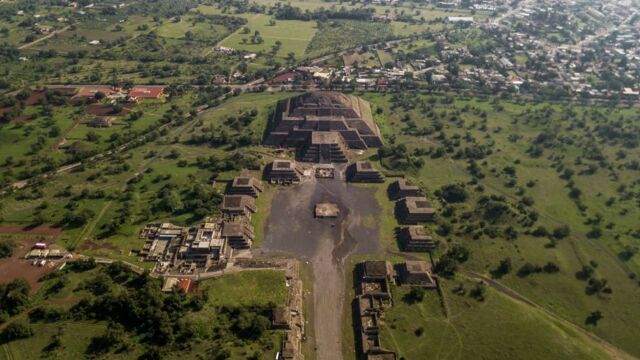Archaeologists in Mexico Have Discovered a Terrifying Ritual Temple

Mexican experts have recently discovered the first temple devoted to the fertility god Xipe Totec, where this deity’s priests and followers used to skin their victims and wear it.
Archaeologists have discovered a rather strange and curious temple in the state of Puebla in central Mexico. Researchers from Mexico’s National Institute of Anthropology and History discovered a temple devoted to the ‘Flayed Lord’ of fertility, Xipe Totec.
Discover our latest podcast
While exploring the ruins of a complex that was built by the Popolocas in the 11th century, researchers found multiple depictions of this fertility god including two large skull-like stone carvings as well as a stone trunk.
More under this adMore under this adSkinned victims
One of these stone statues depicting the fertility god Xipe Totec had an extra hand dangling off one arm, suggesting that the god was wearing the skin of one of its sacrificial victims.
Priests during this era worshipped Xipe Totec by skinning their human victims and then donning this skin, a ritual that was thought to favour fertility and regeneration.
More under this adMore under this adXipe Totec was one of the most important and significant gods during the era before the Spanish invasion which dates back to 1519.
First temple discovery
This isn’t the first time we’ve heard of Xipe Totec, since researchers have already found several artefacts and accounts mentioning this god, including those from the Aztecs. But never has a temple devoted to this cult, nor a sculpture depicting the god, been found before.
More under this adMore under this adIf the Aztec sources could be relied upon, a singular temple to this deity does not necessarily indicate that this was the place of sacrifice. The Aztec practice was to perform the sacrificial death in one or more places, but to ritually store the skins in another, after they had been worn by living humans for some days, explained archaeologist Susan Gillespie from the University of Florida to Detroit News.
'So it could be that this is the temple where they were kept, making it all the more sacred,' she continued. Ancient accounts of these rituals suggested the victims were killed in gladiator-style combats and were not necessarily selected at random.
More under this adMore under this adThe sacrificial altar
The layout of the site that archaeologists have recently discovered also corroborates the theory that their victims were sacrificed on a platform similar to an altar.
During their excavations, researchers discovered two sacrificial altars, three stone sculptures and other architectural elements in the middle of a pyramidal base in the Ndachjian-Tehuacan complex.
More under this ad